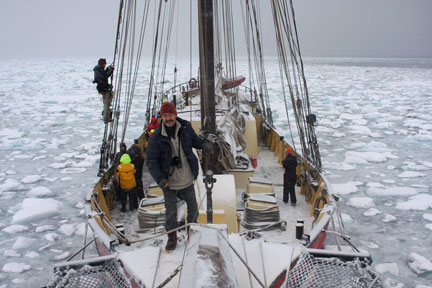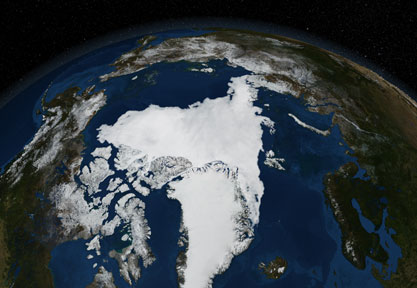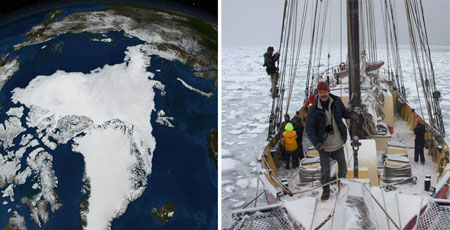1. What are Ocean Currents and Why are they Important?
Questions to ponder
Is there a right way to sail around the world?
Why do oil tankers follow the Gulf Stream on the northbound runs and avoid it on the return trip?
Will the ocean continue to absorb much of the carbon dioxide released to the atmosphere by man's activities?
How could global warming bring a cooler climate in northwest Europe while the rest of the world heats up?
Why does Walvis Bay on the west coast of Namibia receive average annual rainfall of less than 20 mm, when towns on the east coast of Mozambique record 800-900 mm or more?
Why do fishermen use the colour of the water to help them find good fishing grounds?
How can measuring the height of the sea surface help to understand the migration of turtles?
...and what does all this have to do with ocean currents?
Quite a lot, actually.
Some yachtsmen use their knowledge of weather and currents to sail the wrong way around the world. Modern ship routing uses the same information to save both time and money.
Why all this ice?
In September 2007 Arctic sea ice reached an all-time low. Soon after, the Cape Farewell expedition failed to reach Scoresbysund on the east coast of Greenland because of sea ice - far more than normal for the time of year.
Can you explain this paradox?
Click on the image for more information that can help you find the answer.
Ocean waters are always on the move. The flow of the currents influences climate and living conditions for plants and animals - even on land.
Ocean currents
- cool the tropics and warm high latitudes
- influence rainfall patterns around the world, sometimes creating droughts or floods
- create fertile fishing grounds in one area, ocean deserts in another
- transport pollutants released by one country to the beaches of a neighbour.
This tutorial will help you understand how the ocean impacts our daily lives, even if we live a long way from the sea.












